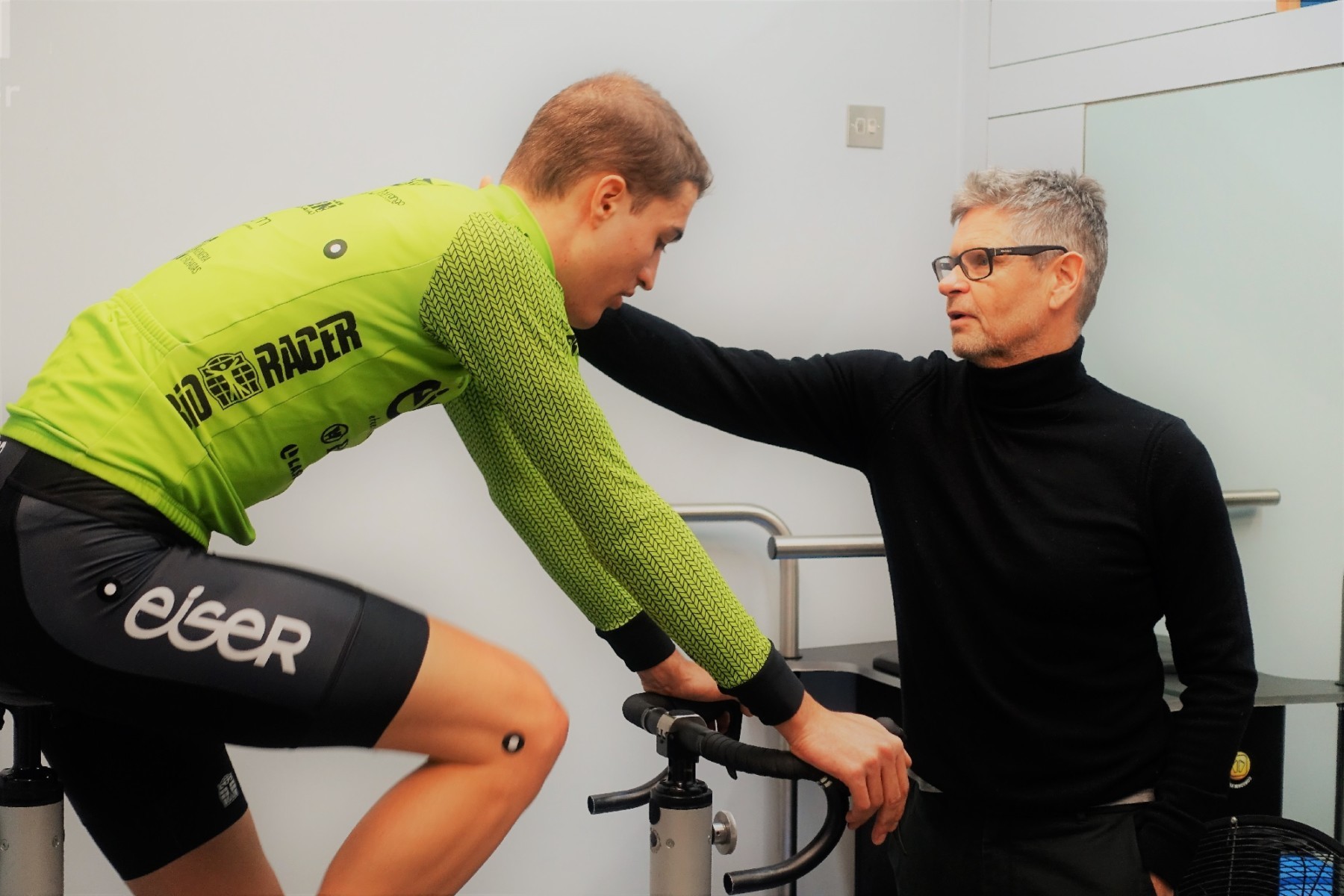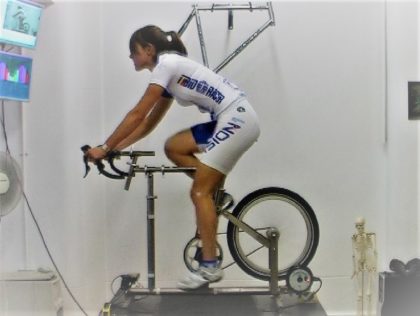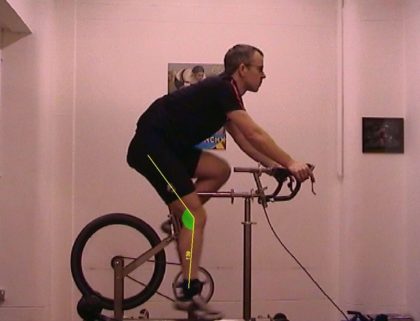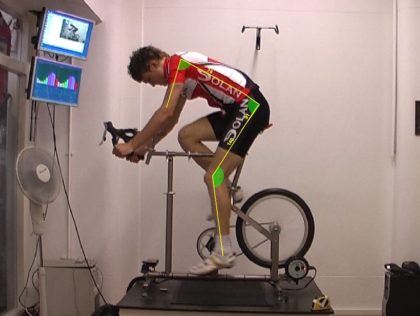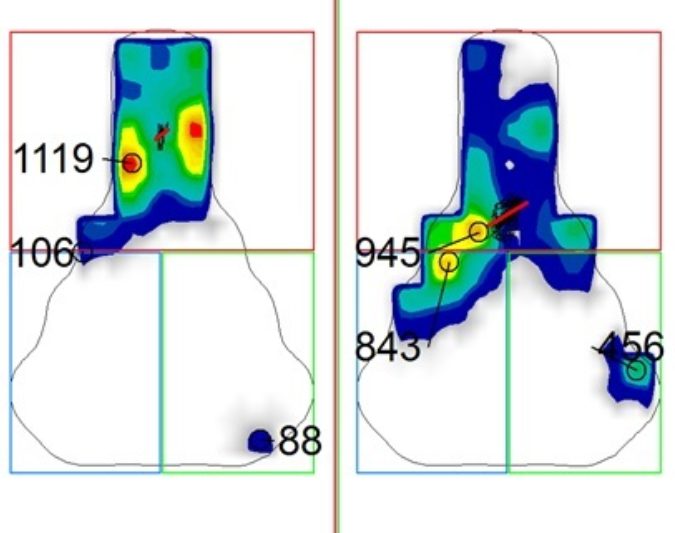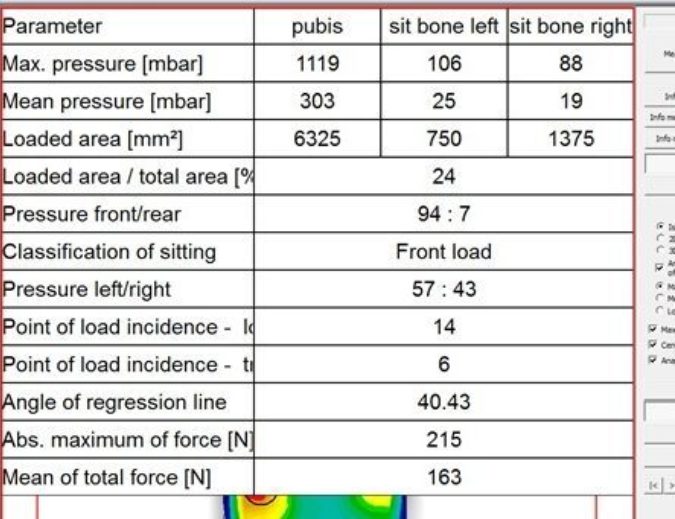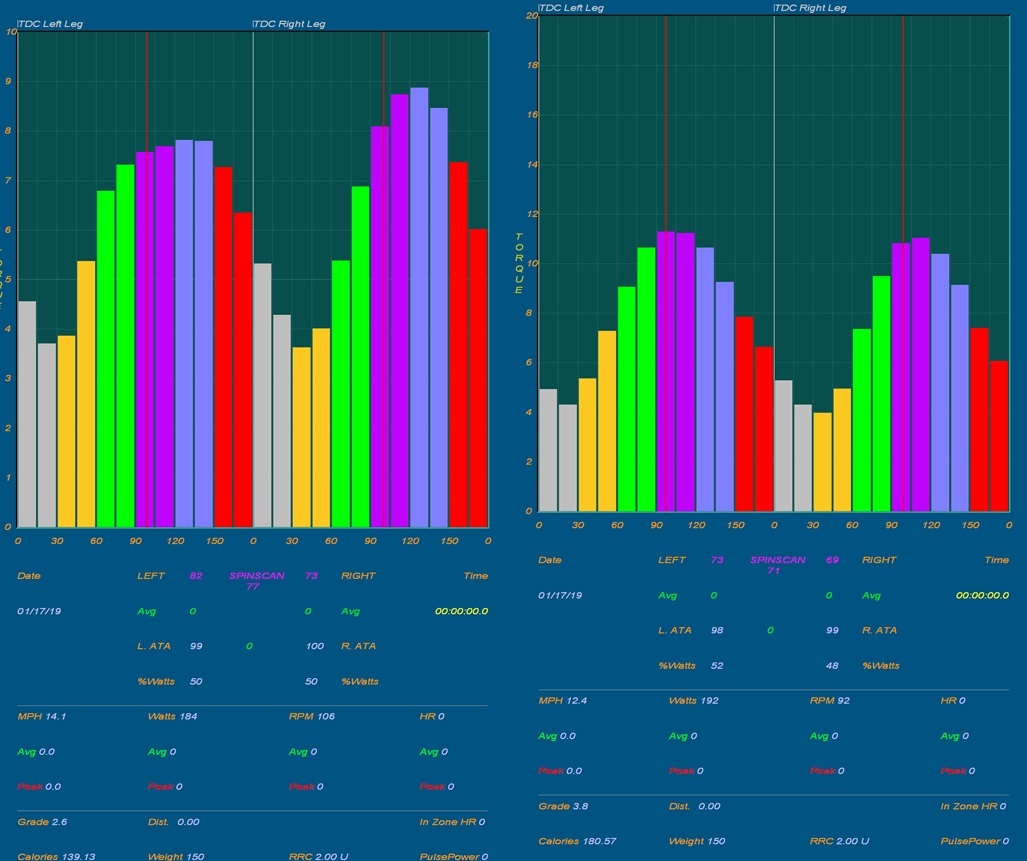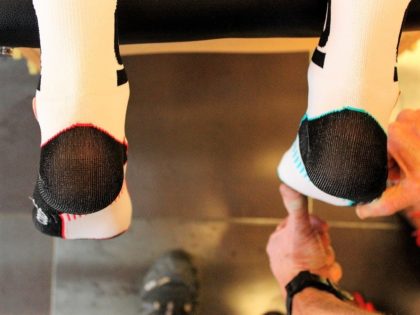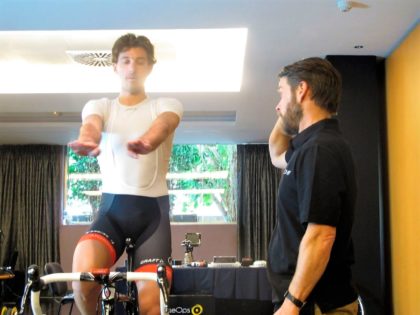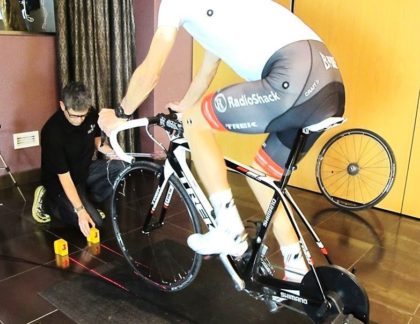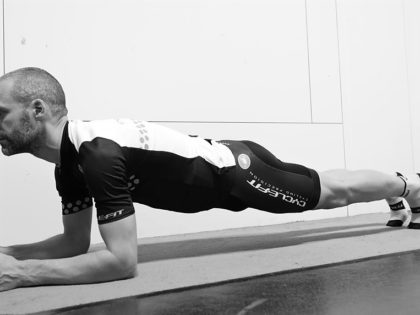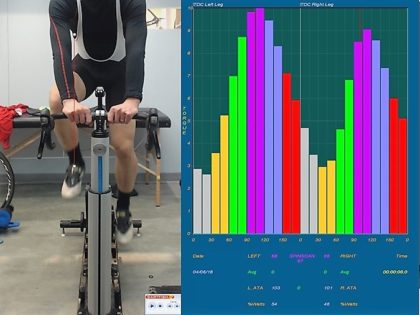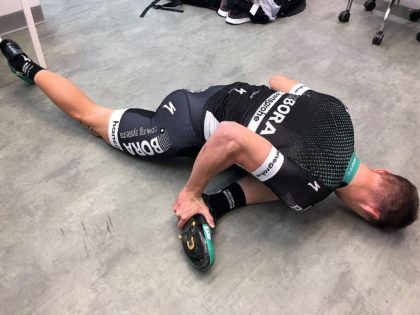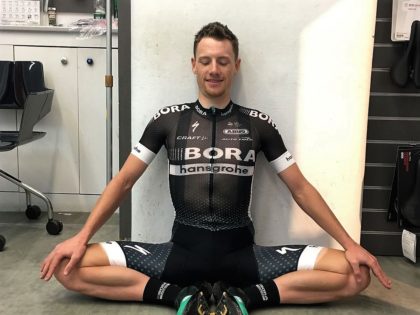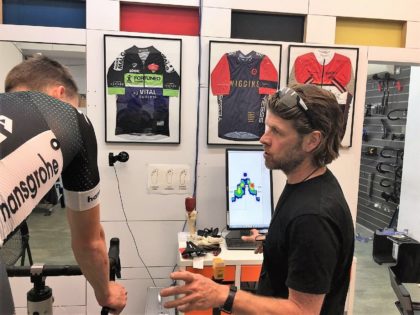Historical Bike Fit Issues
Things have radically changed since we started Cyclefit in 2002. The most common bike-fit related issues we saw in that era were relatively simple by contemporary standards:
- Saddle height - often resulting in anterior or lateral knee pain
- Saddle fore/aft - knee-pain, saddle-contact, stability, poor pedalling etc
- Front-end drop to bars - back/neck/shoulder problems, saddle contact, knee/hip stability etc.
- Foot stability - potential foot, knee, hip, back issues
The Fitters of last Resort
All of these issues still have resonance of course. And all are generally resolved as we go through the current Cyclefit process. The issues we now routinely see in our studios are much more complex and nuanced than a twenty or even ten years ago. In part because there are many other companies offering bike-fitting now, so most of the elementary fit-related issues may have been resolved in a client's previous bike-fit. In that sense we are often 'fitters of last resort' for many people who have been referred for chronic bike-related pain or injury concerns. We now think that a bike-fit is a side-benefit of a Cyclefit, but rarely the primary intention anymore.
Whisper it quietly but elementary bike-fitting is actually pretty easy.
"Whisper it quietly but elementary side-plane bike-fitting is actually pretty easy"
Modern Bike-Fit Issues
1. New Indoor Generation. Watt Can Possibly Go Wrong?
Not knocking it - 66% of Cyclefit staff routinely use indoor training and love it. But high-level static bike training brings its own issues:
- Some indoor trainers/platforms/programmes encourage pedalling techniques that may, in our opinion, adversely affect an individual's biomechanics and proprioception* - our top tip is don't be a "peanut". Correct Pedalling Technique by Jules
- Increased upper-body and saddle-pressure - a partial effect of no headwind - so maybe use another bike on your turbo with a higher bar position?
- Pedalling technique changes - the challenges of the static trainer are different to the road - make sure you also ride on the road or trail as well.
- Riders tend to stand less on a static trainer - standing opens hip and targets glut and core contraction - stand up for power!
- Time spent on a static trainer is time NOT spent in a gym, loading through skeleton - drop one or two of those turbo sessions and get down the gym - vital as we get older and lose muscle bulk and bone-density.
- Cadence and stability - fast cadence drills on static trainers can lead to saddle stability issues - which can lead to saddle pain and saddle sores - see below
- The static bike exaggerates and punishes asymmetry - the bike doesn't move so you have to adapt - make sure your bike fit is optimised - there is nowhere to hide on a static trainer.
- Saddle pressure - static trainers put more pressure through your saddle area. It is an inescapable fact. Plus we tend to sit differently on a static trainer (see image below). Saddle choice and position have to be perfectly calibrated. Think also about reducing the duration of your sessions. Increasing intensity will change the load bias from saddle to pedals. A good thing.
"The upstroke is a myth - don't be a peanut"
2. The Myth Of The Upstroke
Yes this old chestnut or should we say Peanut - We have written so many Articles and Journals on this apparently still controversial subject. And yet still the issues persist. Dr Jeff Broker spoke at our 2012 International Cyclefit Symposium (clip below) and presented the clear data that pedalling is: "a non-circular event". Some companies still seem to advocate pulling up or back or forwards to try and recruit a more circular motion? We simply don't agree and the research seems to back us up. We are bipeds and as such we are powerful in extension, only when we have ground contact.
Our evolved function is to spring off the ground utilising our big extensor muscles - gluts (hip-extenders), quads (knee-extenders), calves (ankle plantar-flexors). Pedalling is a lumpy process in the same way that climbing stairs is a lumpy process. But activities both seek to capture our evolved mechanics.
Don't Be A Peanut!
Our top tip for pedalling is to keep it simple and only push down. I wrote about our evolved function in an earlier Journal - Humans Did Not Evolve to Ride Bikes! By the way professional riders DON'T pull up. And we have never met a well informed one that bothers to try! We cordially invite any company to present research data to the contrary?
3. Why Are We So Obsessed With Cadence?
This should be seen in context with points 1 & 2. (above). It seems to be a general assumption that faster cadence is intrinsically a good thing? In the same way that pulling up and around in a circle is perceived as an inherently virtuous action. We couldn't disagree more. Increasing cadence can be desirable and helpful, but it isn't necessarily so. Fast cadences can lead to increased saddle instability - which in turn can exacerbate saddle pain and sores. Remember stability is as big a component of saddle sores as saddle pressure!
Cadence Case Study -
The images below show the Spinscan of a former elite power athlete, who has converted to cycling. The left image shows him at 106 rpm and 184 watts with a marked asymmetry in force application in the both power and recovery phases. The pedal-stroke is confused and dysfunctional even though the left/right output is a symmetrical 50/50%. The right image shows a beautifully controlled pedal-stroke at 92 rpm and 192 watts. The 52/48% L/R imbalance is, to us, less important than the integrity of the pedalling and biomechanics. This case study has a sweet-spot in his pedalling at 92rpm, in the same way that cars have a sweetspot with their engines where they produce maximum torque (and this almost always not at maximum revs). The reason this client preferred a slower cadence is that he had relatively heavy fast-twitch muscle legs - a faster cadence forced the uphill leg to work against the forces of gravity more often. Much better for this client to make much more out of each individual pedal-stroke. This is often the case.
4. Fit The Foot First
Foot pain is our number one pain referral at Cyclefit. Admittedly that maybe because we run the only Cycling Podiatry Clinics in the UK, but there are a lot of folk out there riding around with very sore feet. The biggest drivers of foot pain are:
- The wrong shoe. You can read our recent If The Shoe Fits Journal on this very subject - Never buy shoes online, or at a shop where they don't measure both feet independently - foot-length, foot-width and seated and standing arch-height - this information should be properly recorded.
As a very rough guide, you must have at least 1/2 a thumb-width of clearance between the end of your longest toe and the end of the shoe. 60% of new clients we see are in a less than optimal shoe! - The wrong foot. Cycling, like skiing is a fixed-foot sport. This puts particular stresses and loads through the foot that need to be finely calibrated. Some feet don't require too much support or correction to function well and remain comfortable over time. Other foot-types need very customised and strong support to deliver power and remain comfortable. Often a person will have two very different foot types that need different You may want to read our What Type of Foot Are You Journal - it may ring some bells for you? A detailed foot assessment is an integral part of every Cyclefit Session
- Foot-pedal interface. Cycling is a closed kinetic chain - closed at the foot by the pedal and closed at the hip by the saddle. Any misalignment at the foot-pedal interface can cause mal-tracking of the knee and/or hip. Our possible interventions are:
* Different shoe
* Different pedal
* Custom foot-bed or orthotic
* Change in float or cleat alignment
* Internal or external wedge
* Stack - i.e. leg-length compensation
* Pedal spacers to change q-angle
Earn Your Position!
In truth this has always been an issue - but now we are expecting more of our body's, often later in life, with less time to attribute to body maintenance. We think that you need at least an hour of off the bike conditioning for every five hours on the bike. This ratio needs to pivot more towards off the bike as we age and lose muscle mass and bone density.
Cyclefit's General Law of Conditioning - That there exists a binary relationship between a rider's general flexibility and conditioning and their ability to sustain an aggressive or aero-position without power-loss, injury or discomfort over time. There are no exceptions.
These are the issues that we see:
- Poor core conditioning - unable to sustain drop to the bars, causing a rotation back through pelvis to alter centre of gravity to unload shoulders/arms/hands. This will negatively affect gluteal and core co-contraction and reduce power, as well as close hip (see picture).
"Cyclefit's General Law of Conditioning - That there exists a binary relationship between a rider's general flexibility and conditioning and their ability to sustain an aggressive road, or aero-position without power-loss, injury or discomfort over time"
- Poor flexibility - a lack of muscle ranges inhibits movement and/or causes unhelpful biomechanical adaptations:
* Too little hip-in-flexion range can cause the hip to abduct (step out) at the top of the pedal-stroke - see image above right
* Too little hamstring range can pull the pelvis back out of its most powerful position and/or drag up the heel at the bottom of the pedal-stroke.
* Tight calves can introduce tension into the whole posterior chain - achilles, calves, hamstrings, glut and into the lower-back - Stability / Strength - cycling does nothing for bone-density, general conditioning or stability. Adding in yoga, circuit-training, pilates or weights will make you stronger an more resilient.
*Proprioception
Proprioception is the sense of the relative position of one's own parts of the body and strength of effort being employed in movement. It is sometimes described as the "sixth sense". In humans, it is provided by proprioceptors in skeletal striated muscles and tendons and the fibrous membrane in joint capsules

